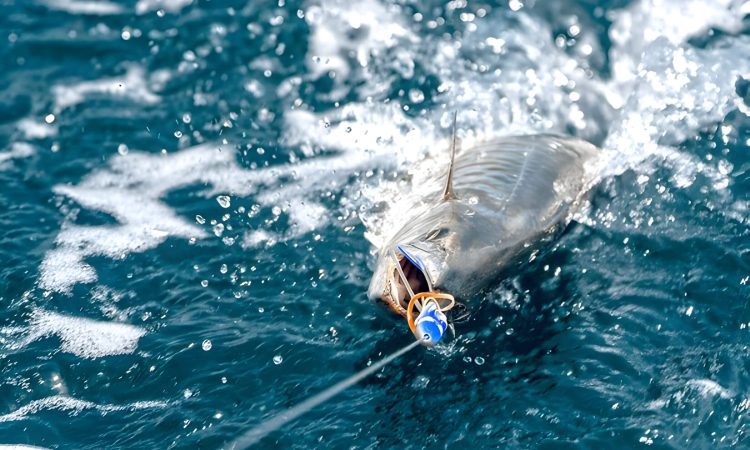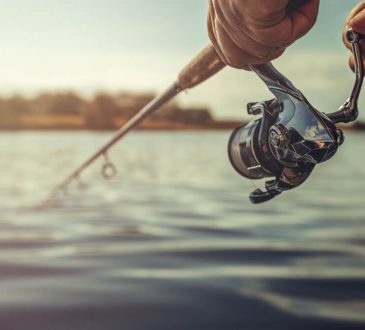
Wahoo fishing captivates anglers worldwide, appealing to both novice and seasoned fishermen. Known for their speed and agility, wahoo fish offer an exhilarating challenge. This guide covers prime locations, essential gear, techniques, and understanding wahoo behavior to help you enhance your skills or embark on your first expedition safely.
Top Locations Around the World for Successful Wahoo Fishing
Wahoo fishing is a thrilling experience that attracts anglers from all around the globe. Known for their speed and tenacity, wahoo are a prized catch in many parts of the world. If you’re looking to reel in one of these magnificent fish, here are some of the best locations for wahoo fishing.
Bahamas (A Premier Wahoo Hotspot)
The Bahamas is renowned for its excellent wahoo fishing spots, particularly around Bimini and Cat Cay. The deep waters off these islands provide an ideal environment for wahoo, especially during the winter months when they migrate closer to shore.
Bermuda (A Fisherman’s Paradise)
Bermuda offers some of the most productive waters for catching wahoo. The island’s location in the Atlantic Ocean creates perfect conditions for these fish, making it one of the top destinations where anglers can expect high success rates.
Mexico (Rich Waters and Abundant Catches)
The Pacific coast of Mexico, particularly around Cabo San Lucas and Puerto Vallarta, is another prime area for wahoo fishing. These regions boast rich marine biodiversity and are well-known as some of the best locations for targeting this speedy predator.
Hawaii (Consistent Year-Round Action)
Hawaii’s warm waters offer year-round opportunities to catch wahoo. The Kona Coast on the Big Island is especially famous among anglers seeking consistent action with this species. Whether you’re a seasoned pro or a novice fisherman, Hawaii’s diverse marine life ensures an exciting fishing adventure.
Australia (Down Under Delights)
Offshore reefs along Queensland’s coast make Australia another top contender on our list of wahoo hotspots. Areas such as Fraser Island and Cairns provide fertile grounds where you can enjoy not only spectacular scenery but also fruitful fishing expeditions.
These locations represent just a few examples where avid fishermen can find abundant opportunities to catch wahoo. Each destination offers unique challenges and rewards, making them essential stops on any angler’s bucket list when searching for where to catch this exhilarating game fish.
Essential Gear and Equipment for Wahoo Fishing Enthusiasts

When it comes to wahoo fishing, having the right gear and equipment can make all the difference. Wahoos are known for their speed and strength, making them a challenging catch that requires specialized equipment. Here’s a rundown of essential gear for wahoo fishing enthusiasts.
Wahoo Fishing Gear
First and foremost, you need robust wahoo fishing gear designed to withstand the power of these formidable fish. This includes high-quality rods, reels, and terminal tackle specifically suited for wahoo fishing.
Best Rods for Wahoo Fishing
Selecting the best rods for wahoo fishing is crucial. Look for rods that are both strong and flexible—typically in the 6 to 7-foot range with a heavy action rating. These rods should be capable of handling heavy lines and providing enough leverage to reel in fast-moving wahoos.
Reels for Catching Wahoo
Reels play an equally important role in your setup. High-speed conventional reels with a strong drag system are ideal for catching wahoo. These reels should have high line capacity to handle long runs without breaking under pressure. Brands like Shimano and Penn offer excellent options tailored specifically for big game fishing.
Terminal Tackle for Wahoo
Finally, your terminal tackle must be up to par. Use wire leaders instead of monofilament or fluorocarbon to prevent wahoos from cutting through with their sharp teeth. Additionally, sturdy hooks and swivels are essential components that shouldn’t be overlooked when preparing your tackle box.
By investing in quality gear tailored specifically for wahoo fishing, you’ll increase your chances of landing one of these prized catches while enjoying a more successful outing on the water.
Proven Techniques and Strategies to Catch More Wahoos
When it comes to catching more wahoos, employing the right techniques and strategies can make all the difference. One of the most effective methods is wahoo trolling techniques, which involve dragging lures or baits behind a moving boat to entice these fast predators. High-speed trolling tips suggest maintaining speeds between 12-18 knots, as wahoos are known for their speed and are more likely to strike at faster-moving targets.
Live baiting for wahoos is another proven strategy. This involves using live fish such as blue runners or small tunas, which can be particularly enticing to a hungry wahoo. Rigging these live baits correctly and presenting them naturally in the water column increases your chances of a successful catch.
For those who prefer a more hands-on approach, jigging methods for wahoos can also be highly effective. This technique involves dropping metal jigs into deeper waters and rapidly retrieving them to mimic the erratic movements of fleeing prey. The sudden bursts of movement can trigger aggressive strikes from lurking wahoos.
Behavior and Habitats of Wahoo Fish
To increase your success rate in catching wahoos, it’s essential to have a comprehensive understanding of their behavior patterns and habitats. Wahoos are known for their speed and agility, making them a prized catch for many anglers. By familiarizing yourself with their feeding habits, seasonal movements, and preferred environments, you can significantly improve your chances of landing one.
Wahoos exhibit distinct behavior patterns that can be leveraged to your advantage. They are typically solitary or found in small groups, often near the surface or at mid-depths in open waters. Their feeding habits are aggressive; they primarily hunt during daylight hours and prefer fast-moving prey such as small fish and squid. This predatory nature means that using high-speed trolling techniques with lures mimicking their natural prey can be highly effective.
The habitat of wahoos is another critical factor to consider. These fish favor warm tropical and subtropical waters but are also found along the edges of deep-water drop-offs and near underwater structures like reefs and seamounts. Understanding these preferences allows you to target areas where wahoos are more likely to be present.
Seasonal movements of wahoos also play a significant role in determining where and when you might encounter them. They tend to migrate following water temperature changes, moving toward warmer waters during colder months. Keeping track of these seasonal shifts can help you plan your fishing trips more strategically.
By gaining insights into the behavior patterns, habitat preferences, feeding habits, and seasonal movements of wahoos, you can enhance your fishing strategy significantly. This knowledge will not only increase your success rate but also provide a more rewarding angling experience overall.
Safety Tips and Best Practices While Engaging in Wahoo Fishing
Engaging in Wahoo fishing can be an exhilarating experience, but it’s essential to prioritize safety to ensure a successful and enjoyable outing. Here are some key safety tips and best practices to keep in mind while engaging in this thrilling sport.
First and foremost, understanding boat safety guidelines is crucial. Ensure your vessel is well-maintained and equipped with necessary safety gear such as life jackets, flares, fire extinguishers, and a first aid kit. Regularly check the weather forecast before heading out to avoid unexpected storms or rough seas.
Handling big game fish like Wahoo requires specific techniques to prevent injuries. Use appropriate fishing gear designed for big game fish and always wear gloves when handling the catch. Be mindful of the fish’s sharp teeth and powerful movements; using a gaff or net can help secure the fish safely.
Women participating in sportfishing should take additional precautions for their safety. Wearing non-slip footwear can prevent falls on slippery decks, while sun protection such as hats, sunglasses, and sunscreen will protect against harmful UV rays. It’s also advisable for women to have a buddy system in place fishing with a partner ensures that help is readily available if needed.
Lastly, deep-sea fishing often involves long hours under potentially harsh conditions. Stay hydrated by drinking plenty of water and take regular breaks to rest. Familiarize yourself with emergency procedures specific to deep-sea fishing scenarios so that you’re prepared for any situation that may arise.
By following these safety tips for deep-sea fishing, handling big game fish safely, adhering to women’s safety measures in sportfishing, and observing boat safety guidelines, you can enjoy your Wahoo fishing adventure with peace of mind knowing that you’ve prioritized your well-being on the water.

